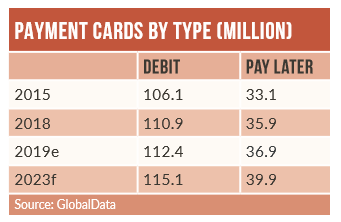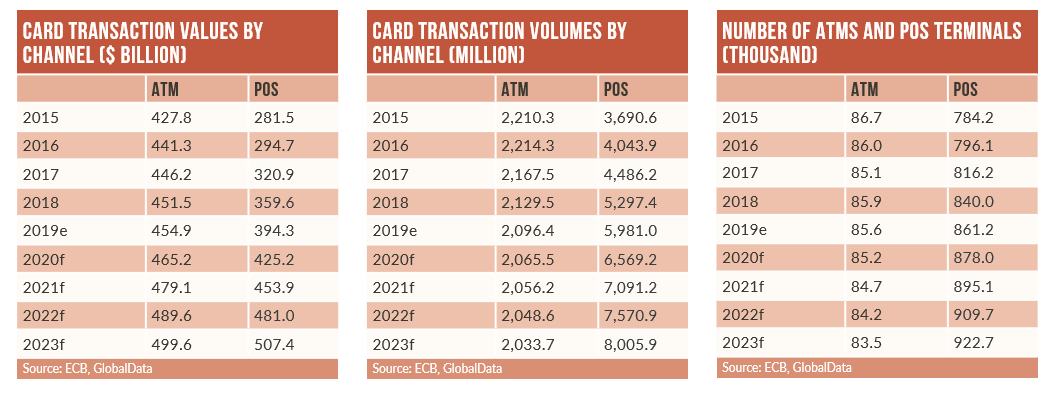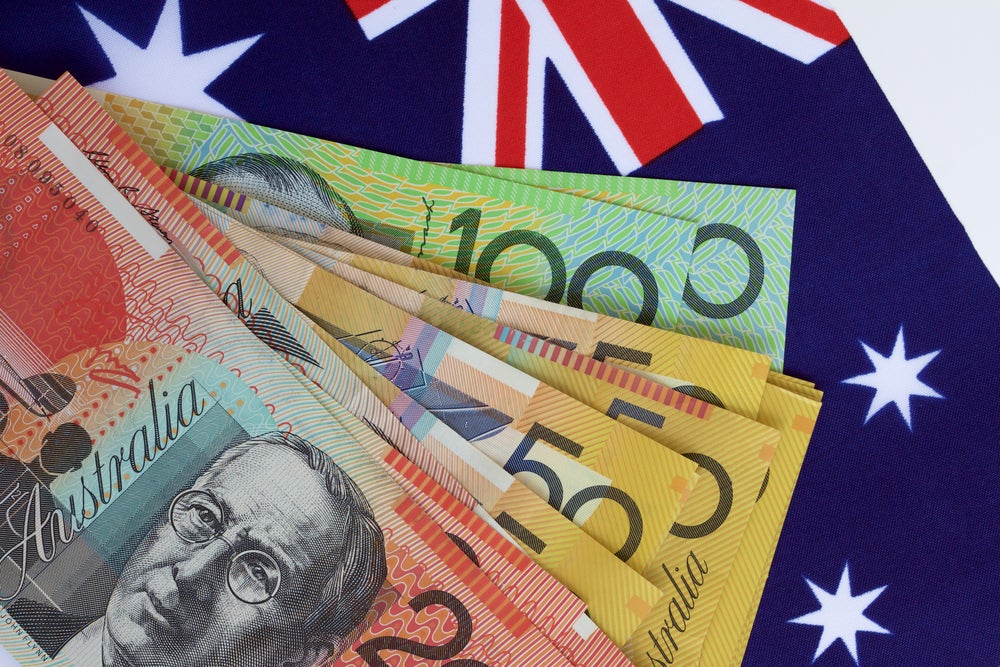Germany has a strong economy and high levels of financial inclusion, despite consumers having a strong inclination towards cash for retail payments.
A German maxim is geld stinkt nicht (money does not stink), and many consumers still see cash as the best available option due to a combination of ingrained habits and cultural preference for spending within one’s means.
While in terms of number of cards in circulation the German payment card market is the third-largest among its peers, behind only the US and the UK, it is still far from being recognised as fully mature.
Germans are gradually shifting towards card-based payments, primarily driven by girocard. The frequency of debit card payments rose from 25.7 times in 2015 to 39.2 times in 2019, at a CAGR of 11.2%. Rising adoption of contactless, the emergence of digital-only banks, and e-commerce growth are expected to boost electronic payments over 2019-2023.
Germans strongly favour debit cards over other cards, and the national girocard scheme is the most frequently used payment card. Until a cap implemented by the EU in 2015, girocard’s low interchange fees compared to international schemes gave it a significant edge in the market – and the new fee rules have had little impact on its dominance.
In order to enhance user convenience, girocards are now equipped with contactless, enabling holders to make payments of up to €25 ($28.64) without entering a PIN. In the first half of 2019, over a fifth of transactions made using girocards were contactless. girocard holders can also make contactless mobile payments.
How well do you really know your competitors?
Access the most comprehensive Company Profiles on the market, powered by GlobalData. Save hours of research. Gain competitive edge.

Thank you!
Your download email will arrive shortly
Not ready to buy yet? Download a free sample
We are confident about the unique quality of our Company Profiles. However, we want you to make the most beneficial decision for your business, so we offer a free sample that you can download by submitting the below form
By GlobalDataThe popularity of credit and charge cards in Germany is relatively low, mainly due to
cultural aversion to debt. Germans prefer to use charge cards over credit cards, in order to benefit from interest-free credit periods without falling into long-term debt. The ready availability of overdraft facilities also tempers demand for credit cards. As a result, these cards accounted for only 19.9% and 17.7% of the overall payment card transaction volume and value respectively in 2019.
The opportunity for credit card revenue in Germany is highly limited, and there would need to be a seismic shift in consumer attitudes to debt to change this.
The German e-commerce market grew from $68.6bn in 2015 to $102.6bn in 2019, supported by technological advances and rising internet penetration. Germans prefer click-and-collect options when shopping online, primarily due to low-cost shipping, pick-up flexibility and easy returns.
PayPal is the most popular online payment method, followed by credit cards and bank transfers. The growth of online shopping events such as Black Friday, Cyber Monday, and Singles’ Day have also driven e-commerce growth.









